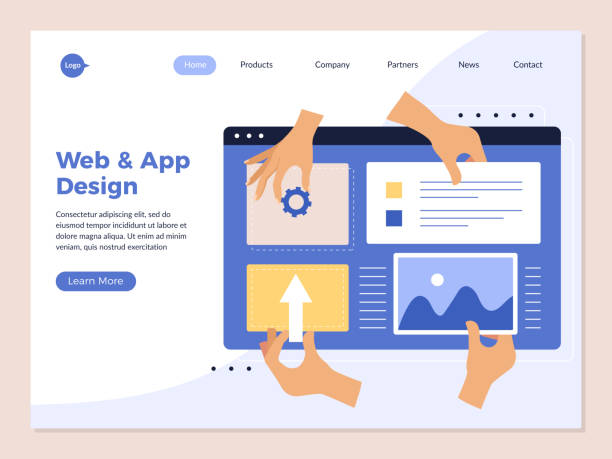Tips to follow while redesigning your website
Defining your goals and objectives is essential to a website makeover because it helps you create a website that aligns with your business needs and objectives. Before starting the redesign process, it's important to determine the primary purpose of your website, such as generating leads, increasing sales, or providing information.
By defining your goals and objectives, you can create a website design and content strategy that meets your specific needs. For example, if your goal is to generate leads, you may want to include lead capture forms on your website or highlight customer success stories to demonstrate the value of your product or service.
Without a clear understanding of your goals and objectives, it's difficult to create a website that meets your business needs. Defining your goals and objectives can also help you measure the success of your website redesign and make adjustments as needed to ensure that it's meeting your business needs.

Analyzing your existing website is an important step in the website makeover process because it helps you identify the strengths and weaknesses of your current website. By analyzing your existing website, you can determine what aspects of the website need improvement and what elements should be retained.
By reviewing your website analytics, you can see which pages are performing well and which ones aren't. This information can help you determine which pages need the most attention and which ones can be left as they are. You can also see which keywords are driving the most traffic to your website and use this information to optimize your new website design and content.
Conducting a user survey can also help you get feedback from visitors to the website. This feedback can be used to identify areas of the website that need improvement and to determine what features and functionality users find valuable.
Simplifying your website design is essential to a website makeover because it can improve the user experience and make your website more visually appealing. A simple and clean design can make it easier for users to find what they're looking for and can also help to establish a professional and credible image for your business.
By simplifying your website design, you can remove clutter and unnecessary elements that may be distracting or confusing to users. This can include simplifying your navigation menu, reducing the number of images and graphics, and using a consistent color scheme and typography throughout the website.
Simplifying your website design can also improve the website's loading speed, which can be a critical factor in retaining users and reducing bounce rates. By using optimized images and reducing the number of plugins and scripts used on the website, you can improve page load times and provide a better user experience.
Finally, simplifying your website design can make it easier for you to maintain and update your website over time. By having a streamlined and easy-to-use content management system, you can quickly make changes and updates to the website without the need for extensive technical expertise.
Including clear calls-to-action (CTAs) is essential to a website makeover because it can help you achieve your business goals by encouraging users to take specific actions on your website. CTAs can be used to drive conversions, such as generating leads or making sales, or to encourage users to take specific steps, such as signing up for a newsletter or following you on social media.
you can guide users towards the actions you want them to take. CTAs should be strategically placed throughout the website, such as on product pages, blog posts, and landing pages, and should use compelling and actionable language to encourage users to take action.
When designing your CTAs, it's important to consider the color, placement, and size of the button. Your CTA button should stand out from other elements on the page and be easy to click. The language used in the CTA should be action-oriented and create a sense of urgency or excitement to motivate users to take action.
Choosing a user-friendly content management system (CMS) is essential to a website makeover because it can make it easier for you to manage your website content and make updates to your website. A user-friendly CMS can save you time and resources in the long run by allowing you to make changes quickly and easily without extensive technical expertise.
A user-friendly CMS should be easy to navigate and offer a simple interface that allows you to make updates to your website content, such as adding new pages, images, or blog posts. The CMS should also provide a range of features and functionality that are tailored to your business needs, such as e-commerce capabilities, social media integration, and SEO tools.
When choosing a CMS, it's important to consider your budget, technical expertise, and the needs of your business. There are a range of CMS options available, from open-source platforms like WordPress and Drupal to proprietary systems like Squarespace and Wix. It's important to research and compare different CMS options to find the one that best fits your business needs and technical expertise.
Ensuring accessibility is essential to a website makeover because it can improve the user experience and make your website available to a wider audience, including people with disabilities. By making your website accessible, you can ensure that all users can access and use your website, regardless of their abilities or disabilities.
Accessibility involves designing your website in a way that accommodates a range of disabilities, such as visual impairments, hearing impairments, or motor disabilities. This can include adding alt text for images and videos, providing transcripts or captions for audio and video content, and using high-contrast colors and fonts for users with visual impairments.
To ensure accessibility, you should also make sure that your website is compatible with assistive technologies, such as screen readers and speech recognition software. This can involve designing your website with clear and descriptive headings and labels, and using HTML5 and ARIA attributes to provide additional context and information for assistive technology users.
Working with a web design and development team is an essential aspect of website redesign, as it can help ensure that your website meets your business goals and provides a positive user experience. Here are some reasons why working with a professional web design and development team is important for website redesign:
A web design and development team has the expertise and knowledge to create a website that is visually appealing, functional, and optimized for search engines. They can provide valuable insights and recommendations for your website redesign, based on their experience in the field.
Working with a web design and development team allows for collaboration and communication throughout the design process. This can help ensure that the final product meets your business needs and goals, and is aligned with your brand identity and messaging.
A professional web design and development team can work efficiently to deliver a high-quality website redesign within a specified timeline. They have the resources and tools needed to streamline the design process and ensure that the final product is of the highest quality.
A web design and development team can provide technical support and maintenance for your website after it is launched. This ensures that your website remains up-to-date and optimized for the latest technologies and standards.
A web design and development team can focus on creating a positive user experience for your website's visitors. This includes designing a user-friendly interface, implementing responsive design, and optimizing page load times to ensure that users have a positive experience on your website.
Our Client
















